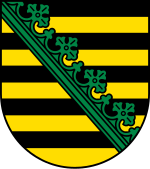고탄다 역
Gotanda Station JY23IK01A05 고탄다 역 五反田駅 | |||||||||||||||||||||||||||||||
|---|---|---|---|---|---|---|---|---|---|---|---|---|---|---|---|---|---|---|---|---|---|---|---|---|---|---|---|---|---|---|---|
 고탄다 역, 2021년 동쪽 출구 | |||||||||||||||||||||||||||||||
| 위치 | 도쿄 도 시나가와 시 일본. | ||||||||||||||||||||||||||||||
| 운영자 | |||||||||||||||||||||||||||||||
| 회선 |
| ||||||||||||||||||||||||||||||
| 역사 | |||||||||||||||||||||||||||||||
| 열린 | 1911 | ||||||||||||||||||||||||||||||
| 서비스 | |||||||||||||||||||||||||||||||
| |||||||||||||||||||||||||||||||
| 위치 | |||||||||||||||||||||||||||||||
고탄다 역(일본어: 五反駅駅, 일본어 발음: [고탄다에키])은 일본 도쿄 도 시나가와 시의 철도역으로, 동일본 철도 회사(JR East)와 민간 철도 사업자인 토큐 코퍼레이션, 도쿄 지하철 운영자 토에이 등이 운영하고 있다.
줄들
고탄다 역은 다음 노선이 운행한다.
- JR 이스트 야마노테 선
- 토에이 아사쿠사 선(스테이션 번호 A-05)
- 토큐 이케가미 선 - 종착역
측점 배치도
JR 이스트
JR East 역은 두 개의 선로를 운행하는 높은 섬 플랫폼으로 구성되어 있다.역에는 '미도리노마도구치' 직원 매표소가 있다.
| 1 | JY 야마노테 선 | (시계 반대) 시나가와·도쿄·우에노용 |
| 2 | JY 야마노테 선 | (시계방향) 시부야, 신주쿠, 이케부쿠로용 |
가슴 높이 플랫폼 엣지 도어는 2015년 2월 야마노테 선 플랫폼에 설치됐으며, 3월부터 가동이 시작됐다.[1]
토큐
토큐 역은 JR 승강장 위에 위치한 두 개의 선로를 운행하는 하나의 고가 섬 승강장으로 구성되어 있다.
| 1-2 | IK 도큐 전철 이케가미 선 | 하타노다이, 유키가야오쓰카, 가마타용 |
토에이
도에이 지하철역은 두 개의 선로를 운행하는 하나의 지하 섬 플랫폼으로 구성되어 있다.
| 1 | 아오에이아사쿠사 선 | 니시마고메용 |
| 2 | 아오에이아사쿠사 선 | 센가쿠지·니혼바시·오시아게용 게이세이 다카사고, 게이세이쓰다누마, 나리타 공항의 KS카이세이 선 인바니혼이다이행 HSHOKuso 철도 나리타 공항행 KSNARITA 스카이 액세스 라인 시바야마치요다 철도 SRS히바야마 선 |
역사
JR역은 1911년 10월 15일에 처음 문을 열었다.[2]토큐 이케가미 선 역은 1928년 6월 17일에 개통되었다.[3]도에이 아사쿠사 선 역은 1968년 11월 15일에 개통되었다.[3]
승객통계
2013 회계연도 JR동부역은 하루 13만2524명(승선객만 해당)의 이용객으로 JR동부가 운영하는 24번째로 붐비는 역이다.[4]같은 회계연도에 토큐 역은 하루 평균 10만8025명(입·퇴선 승객)이 이용되어 이케가미 선에서 가장 혼잡한 역이 되었다.[5]
전년도 각 사업자의 일일 승객 수치는 아래와 같다.
| 회계연도 | JR 이스트 | 토큐 |
|---|---|---|
| 1999 | 133,202[6] | |
| 2000 | 132,411[7] | |
| 2005 | 126,137[8] | 101,969[9] |
| 2010 | 129,154[10] | 102,101[11] |
| 2011 | 127,996[12] | 101,904[13] |
| 2012 | 130,633[14] | 105,167[15] |
| 2013 | 132,524[4] | 108,025[5] |
- JR East 수치는 탑승객만을 위한 것이라는 점에 유의하십시오.
주변지역
참고 항목
참조
- ^ 山手線五反田駅に可動式ホーム柵が設置される [Platform edge doors installed at Yamanote Line Gotanda Station]. Japan Railfan Magazine Online (in Japanese). Japan: Koyusha Co., Ltd. 25 February 2015. Retrieved 25 February 2015.
- ^ 各駅情報(五反田駅) [Station information (Gotanda Station)] (in Japanese). Japan: East Japan Railway Company. Retrieved 26 December 2011.
- ^ a b Terada, Hirokazu (July 2002). データブック日本の私鉄 [Databook: Japan's Private Railways]. Japan: Neko Publishing. ISBN 4-87366-874-3.
- ^ a b 各駅の乗車人員 (2013年度) [Station passenger figures (Fiscal 2013)] (in Japanese). Japan: East Japan Railway Company. Archived from the original on 6 May 2001. Retrieved 6 September 2014.
- ^ a b 2013年度乗降人員 [2013 Station passenger figures] (in Japanese). Japan: Tokyū Corporation. 4 June 2014. Retrieved 6 September 2014.
- ^ 各駅の乗車人員 (1999年度) [Station passenger figures (Fiscal 1999)] (in Japanese). Japan: East Japan Railway Company. Retrieved 6 September 2014.
- ^ 各駅の乗車人員 (2000年度) [Station passenger figures (Fiscal 2000)] (in Japanese). Japan: East Japan Railway Company. Archived from the original on 9 October 2014. Retrieved 6 September 2014.
- ^ 各駅の乗車人員 (2005年度) [Station passenger figures (Fiscal 2005)] (in Japanese). Japan: East Japan Railway Company. Archived from the original on 9 October 2014. Retrieved 6 September 2014.
- ^ 2005年度乗降人員 [2005 Station passenger figures] (in Japanese). Japan: Tokyū Corporation. 19 May 2006. Retrieved 6 September 2014.
- ^ 各駅の乗車人員 (2010年度) [Station passenger figures (Fiscal 2010)] (in Japanese). Japan: East Japan Railway Company. Archived from the original on 6 October 2014. Retrieved 6 September 2014.
- ^ 2010年度乗降人員 [2010 Station passenger figures] (in Japanese). Japan: Tokyū Corporation. 19 May 2011. Retrieved 6 September 2014.
- ^ 各駅の乗車人員 (2011年度) [Station passenger figures (Fiscal 2011)] (in Japanese). Japan: East Japan Railway Company. Archived from the original on 8 October 2014. Retrieved 6 September 2014.
- ^ 2011年度乗降人員 [2011 Station passenger figures] (in Japanese). Japan: Tokyū Corporation. 15 May 2012. Retrieved 6 September 2014.
- ^ 各駅の乗車人員 (2012年度) [Station passenger figures (Fiscal 2012)] (in Japanese). Japan: East Japan Railway Company. Archived from the original on 7 October 2014. Retrieved 6 September 2014.
- ^ 2012年度乗降人員 [2012 Station passenger figures] (in Japanese). Japan: Tokyū Corporation. 29 May 2013. Retrieved 6 September 2014.
외부 링크
| 위키미디어 커먼즈에는 고탄다 역과 관련된 미디어가 있다. |
- JR East 역 정보 (일본어로)
- JR 고탄다 역 지도(JR East)
- 고탄다 역 (토이) (일본어)
- 고탄다 역 (토큐) (일본어)







